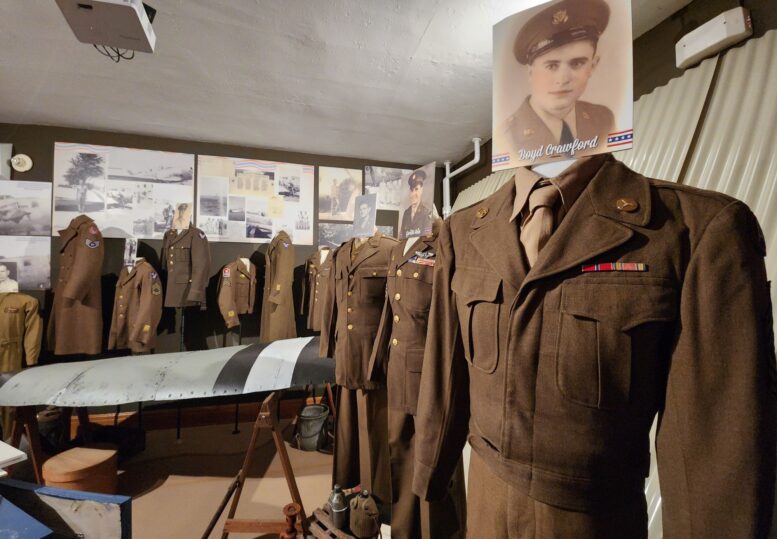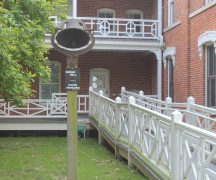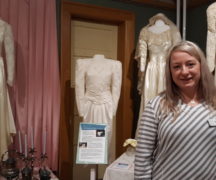By JAN McLAUGHLIN
BG Independent News
Wood County Museum can’t compete against the National World War II Museum with its tanks, fighter planes and submarines. And it doesn’t want to.
That’s not the story being told at the local museum on the southeast edge of Bowling Green.
“We are telling the story from the ground up, from the eyes of the local folks here in Wood County,” said Museum Director Annette Wells. The new exhibit tells of the men and women who served in Europe, the Pacific, and Africa – and the families they left behind in towns and farms scattered across Wood County.
“This brings a large world event into focus,” Wells said. “We have their letters. We have their uniforms,” and the personal stories shared with families.
“This brings a huge, terrible event down to the local level,” Wells said.
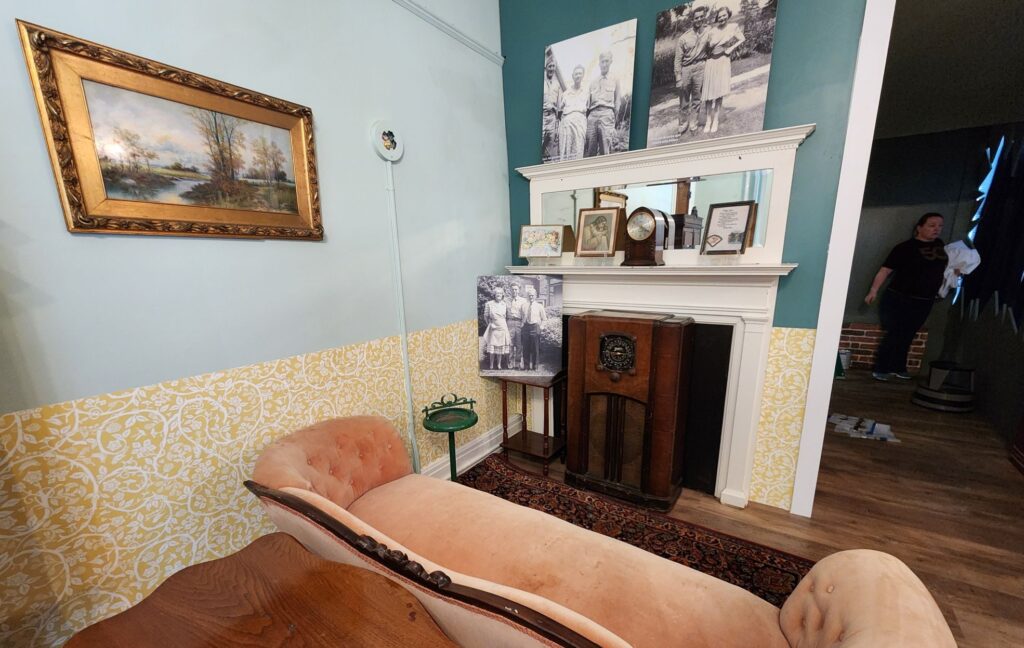
The new exhibit at the Wood County Museum titled, “We’ll Meet Again, Remembering World War II,” challenges the romantic notion of war through the exhibition of objects used by service men and women from Wood County, coupled with film and first-person audio experiences.
The ribbon cutting for the exhibit will be held Thursday, April 24, at 4 p.m., at the museum, 13660 County Home Road, Bowling Green. And open house reception with refreshments will follow from 4:15 to 6 p.m. This event is free and open to the public.
The World War I exhibit in 2017 put visitors down in the trenches with doughboys. This exhibit puts visitors face to face with more than 50 local soldiers, sailors and pilots whose war memorabilia has been donated to the museum over the decades.

There are the Army boots worn by former BG mayor Bruce Bellard, guns and knives used by Harold Bechtel, and black and white photos taken in France and Germany by Harold Patten. There’s a Nazi flag sent to Dick Edward’s father, by one of the first soldiers to reach Adolf Hitler’s hideaway, the “Eagle’s Nest.”
As visitors follow the exhibit, they begin in a 1940s living room, with FDR’s “Day of Infamy” about Japan’s attack on Pearl Harbor, being played on the radio.
For those who know little about World War II, there’s an explanation of the Axis of Power that Americans rose to challenge.
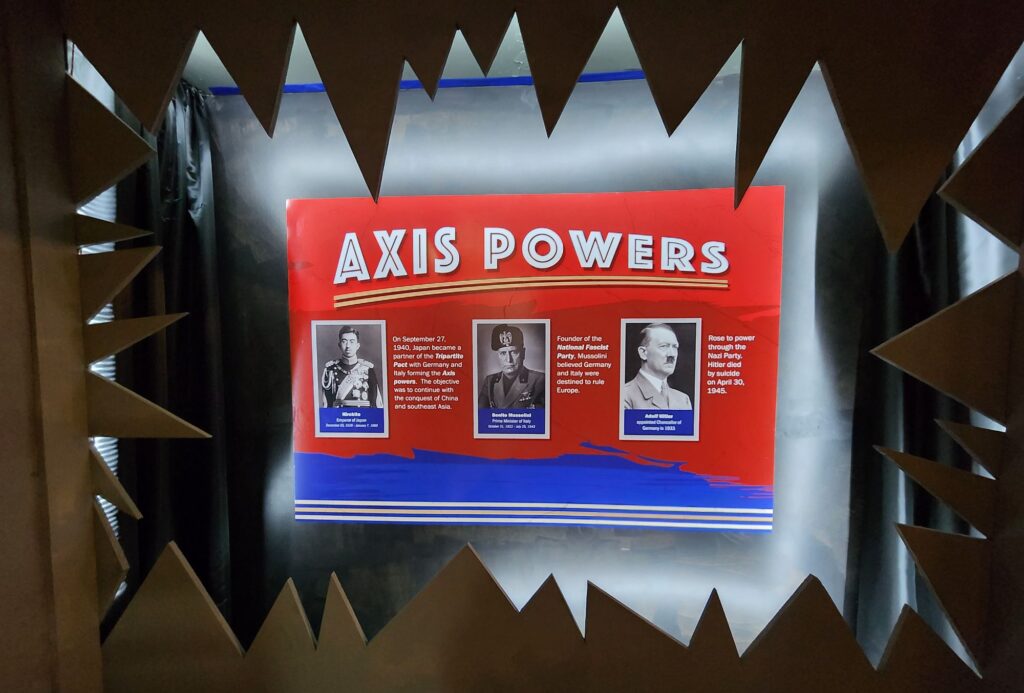
The walls are plastered with recruitment posters, maps, and signs urging Americans to ration goods to help their men and women in uniform.
“It’s an all encompassing feeling of the 1940s,” said Curator Holly Kirkendall.
Beyond the living room back home, visitors wander through items of war brought home by those who served. There are battered canteens, dog tags, trunks, tattered flags, medals awarded for bravery, and letters sent home to sweethearts. There are 750 letters alone written between Wood County man Harold Patten and his love, La Verne Patten.
There are instructions on polishing and shining military shoes, and pages of the “Stars and Stripes” newspaper.
For families back home, there are posters explaining steps to take during an air raid, and signs encouraging folks back in the states to buy war savings bonds and plant “Victory Gardens.”
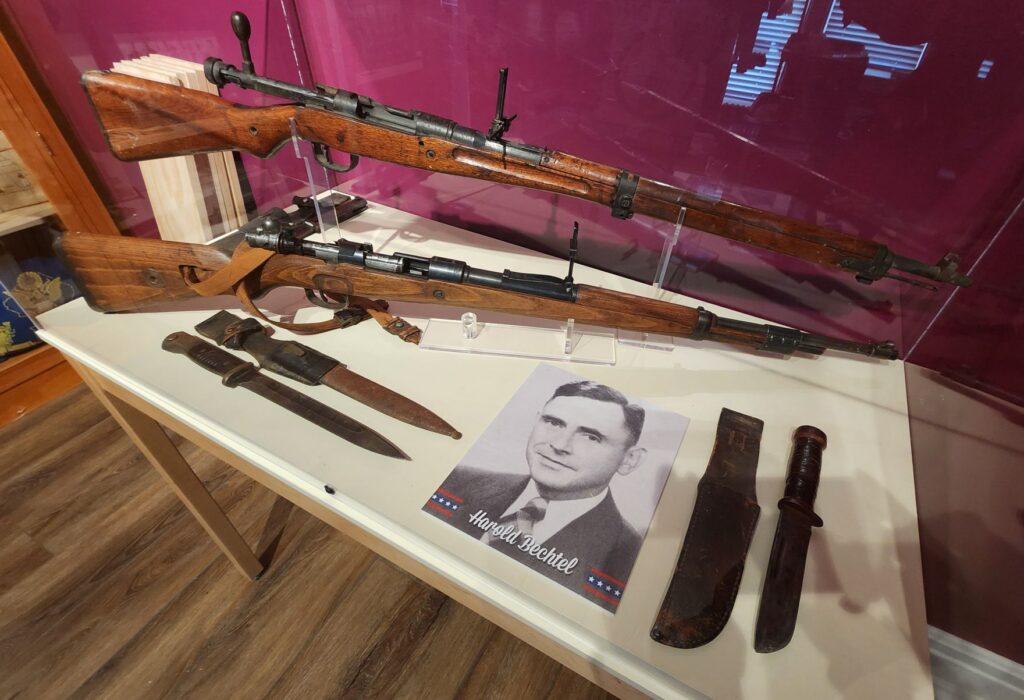
There’s one room dedicated to local WWII Army veterans, and another room turned into a ship for Navy veterans. And there’s information on local WACs (Women’s Army Corps) and WAVES (Women in the U.S. Navy.)
Touchscreens allow visitors to search for more information on the Wood County veterans.
“It lets you absorb things at your pace,” said Marissa Muniz Kolhoff, marketing and event coordinator at the museum. And it allows people to skim the surface or dig deep into the local veterans.
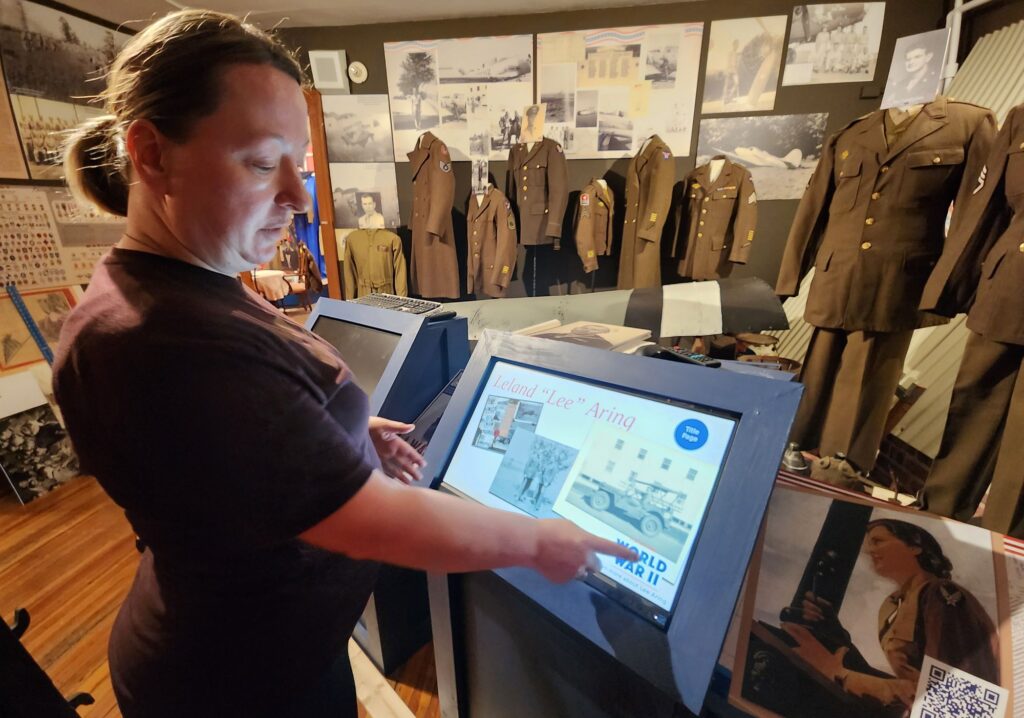
Whenever possible, the uniforms standing at attention are paired with photographs of the men who wore them. Many of the names are familiar, like Harold Bateson, Boyd Crawford, Gerald Hein, Harold Mercer, Don Cunningham, Malcomb Acocks, Lloyd Shelton, Robert Hirzel, Allen Allion, Harold Kaltenbach and Richard Blasius.
One room has been turned into an old movie theater, with black and white blockbusters playing on the screen. Another room has clips of entertainment – like Lucille Ball performing antics – sent overseas for the men and women in uniform.
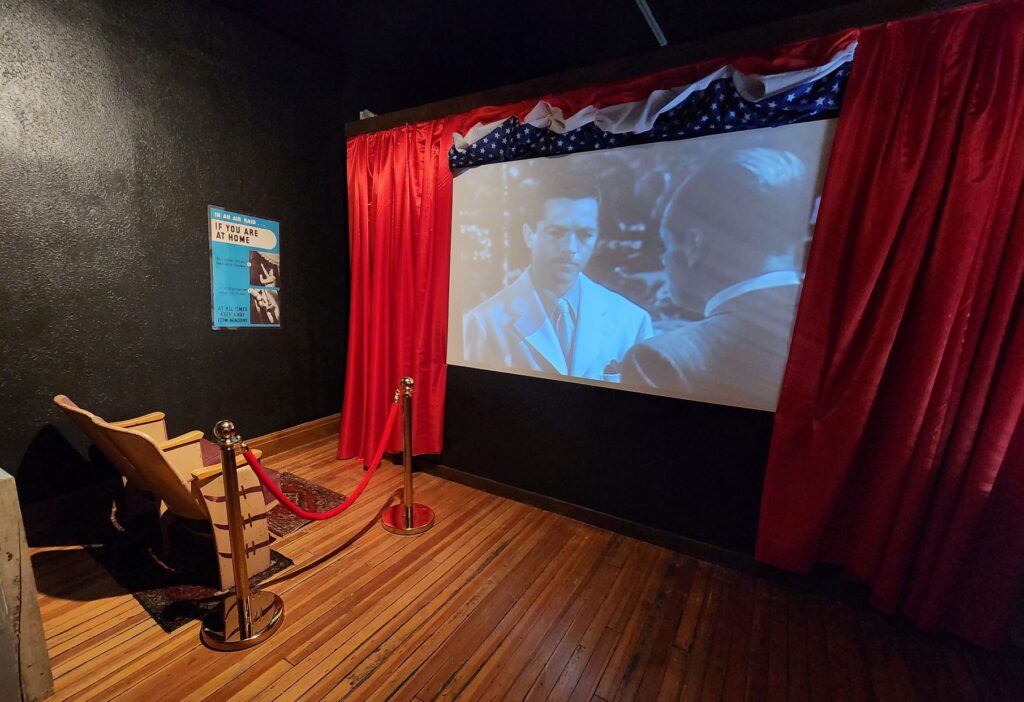
Photos show Lee Aring’s combat engineering feats, and Paul Brown’s efforts building tanks at the Toledo Tank Depot.
Kirkendall was able to talk with a surviving WWII veteran in Wood County, but he asked that his memories be kept anonymous since he felt he hadn’t contributed much to the war effort.
To bring the war exhibit to a level for younger museum visitors, there will be activities about rationing for kids.
“We are so far removed from it,” said Alyssa Garland, museum and events assistant.

The activities will include recipes (with substitutes) for main dishes, plus lessons on rationing sugar, meat, dairy, coffee, tin, fabric and rubber, and tips on growing “Victory Gardens.”
Just a couple days from the exhibit opening, museum staff were busy putting history in order. They avoided the scuttling of the exhibit when the already approved Ohio Humanities grant funding was pulled due to federal cuts. The grant had already been approved by Congress, but had not yet been allocated.
The Wood County Commissioners stepped up to fill in the funding gap.


